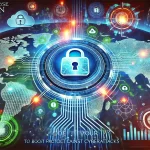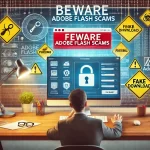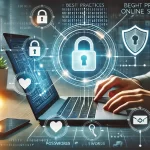How to Secure Your Devices and Keep Threats at Bay
Introduction
In today’s digitally connected world, computers are essential for work, communication, and entertainment. Yet, this reliance on technology exposes us to increasing cybersecurity threats, with viruses and malware being at the forefront. These malicious programs can lead to stolen data, financial loss, and disrupted workflows, often with far-reaching consequences.
This guide by PC Runs explores everything you need to know about protecting your computer from viruses. From understanding the evolution of threats to adopting actionable strategies, this resource ensures you are equipped to safeguard your digital life. Whether you’re an individual or a business, this knowledge is invaluable for maintaining security and peace of mind.
History and Background
The Origin of Viruses
The concept of malicious software traces back to the 1940s, but the first true computer viruses appeared in the 1970s. Experiments in self-replicating code by scientists like John von Neumann laid the foundation for modern viruses.
The Dawn of Malicious Attacks
The 1980s witnessed the rise of viruses like the Elk Cloner, which spread via floppy disks, demonstrating how vulnerabilities in storage media could be exploited. The trend continued with viruses such as Brain, one of the first MS-DOS boot sector viruses, in 1986.
The Internet Age
The proliferation of the internet in the 1990s marked a new era for viruses. Email-based threats like Melissa (1999) and file-sharing exploits like the ILOVEYOU worm (2000) demonstrated the dangers of interconnected systems.
Current Landscape
Today, cybercriminals use advanced techniques like social engineering, ransomware, and state-sponsored malware. As defenses improve, attackers continuously adapt, keeping cybersecurity a critical area of focus.
Core Concepts and Principles
Understanding Viruses
A computer virus is a type of malware that replicates and spreads to other devices. Unlike other malware types, viruses require user action, such as opening an infected file, to activate.
How Malware Differs from Viruses
While all viruses are malware, not all malware are viruses. Malware includes spyware, ransomware, and adware, each with unique characteristics:
-
- Spyware secretly monitors user activity.
- Ransomware encrypts files and demands payment for their release.
- Adware delivers intrusive ads, often bundled with legitimate software.
The Infection Cycle
Viruses spread through various means, including:
-
-
- Email Attachments: Phishing emails lure users into opening infected files.
- Unsecured Websites: Malicious websites exploit browser vulnerabilities.
- Removable Media: USB drives can carry and transmit viruses.
-
Why Prevention is Key
Once a virus infiltrates a system, it can be challenging to remove without causing data loss or system downtime. Prevention remains the most effective strategy.
Current Trends and Developments
Rise of Polymorphic Viruses
Polymorphic viruses constantly change their code to evade detection. Traditional signature-based antivirus systems often fail to detect these threats, requiring more sophisticated solutions.
AI-Driven Cybersecurity
Artificial intelligence has revolutionized virus protection. Modern antivirus programs use AI to identify unusual patterns and block zero-day threats, even without prior knowledge of the malware.
Cloud-Based Protection
Cloud antivirus systems leverage remote servers to detect threats in real-time, reducing the burden on individual devices and ensuring up-to-date defenses.
IoT Threats
As smart devices become ubiquitous, cybercriminals target Internet of Things (IoT) ecosystems. A compromised smart device can act as a gateway for infecting entire networks.
The Role of Cyber Hygiene
Simple habits like regularly updating passwords and software have gained prominence as effective preventive measures. The cybersecurity mantra “Patch, Protect, and Practice” underscores the importance of staying vigilant.
Applications and Implications
Protecting Personal Data
In a world where personal information is gold, safeguarding your devices ensures protection against identity theft and financial fraud.
Ensuring Business Continuity
Viruses can cripple businesses, especially small enterprises that lack dedicated IT support. Preventative measures safeguard operations and customer trust.
Enabling Remote Work and Learning
With the rise of remote work and online education, secure devices are vital for protecting sensitive information and preventing unauthorized access.
Protecting Critical Infrastructure
Beyond personal and business use, virus protection extends to critical systems like healthcare, banking, and utilities. A single breach in these sectors can have catastrophic consequences.
Challenges and Solutions
Common Challenges
-
-
- Overconfidence in Security Tools: Users often rely solely on antivirus software, neglecting other preventive measures.
- Phishing Awareness: Many users fail to recognize phishing attempts, leading to breaches.
- Outdated Systems: Older devices often lack the capability to support modern antivirus solutions.
-
Solutions
1. Multi-Layered Security
-
-
- Combine antivirus tools with firewalls, VPNs, and browser protections.
- Use multi-factor authentication for added layers of security.
-
2. Regular Updates
-
-
- Always update software to patch vulnerabilities.
- Enable automatic updates to stay current without manual intervention.
-
3. Education and Awareness
-
-
- Conduct cybersecurity training for employees or family members.
- Follow trusted cybersecurity blogs and forums for up-to-date advice.
-
4. Backup Strategies
-
-
- Use cloud storage or external drives to back up essential files regularly.
- Ensure backups are disconnected from the main system to avoid simultaneous infection.
-
Future Prospects
AI-Enhanced Threat Detection
AI will continue to evolve, predicting and neutralizing threats before they spread. Advanced systems may even automate response actions to minimize human intervention.
Behavioral-Based Security
Future antivirus systems will analyze user behavior to identify anomalies, offering an additional layer of defense.
Quantum-Resistant Encryption
As quantum computing develops, new encryption protocols will protect against threats capable of breaking traditional cryptographic methods.
Universal Security Standards
Global standards for device security may emerge, ensuring consistency in protection across platforms and devices.
Case Studies and Examples
1. Ransomware Attack on Healthcare Systems
In 2021, hospitals worldwide faced ransomware attacks, disrupting patient care and delaying surgeries. Institutions with robust backups restored systems quickly, minimizing harm.
2. Phishing Attack on Small Businesses
A phishing email disguised as a client inquiry infected a small accounting firm. Fortunately, a cloud-based antivirus detected and quarantined the threat, averting data theft.
3. Success Story: Home User with Layered Protection
A family using multi-layered security—including antivirus software, a VPN, and cautious browsing habits—prevented a potential malware attack originating from a compromised streaming service.
Conclusion
In a world teeming with cyber threats, protecting your computer is more critical than ever. By understanding the evolution of viruses, recognizing modern threats, and adopting comprehensive protective measures, you can secure your digital assets effectively.
At PC Runs, our mission is to empower users with the tools and knowledge needed to thrive in a tech-centric world. From installing antivirus software to practicing cyber hygiene, every small step you take contributes to a safer digital environment.
Take Action Today:
- Subscribe to our newsletter for the latest tips.
- Explore our detailed guides and reviews for selecting the best antivirus tools.
- Share this article to help others protect their devices.
Together, let’s build a cyber-secure future.




